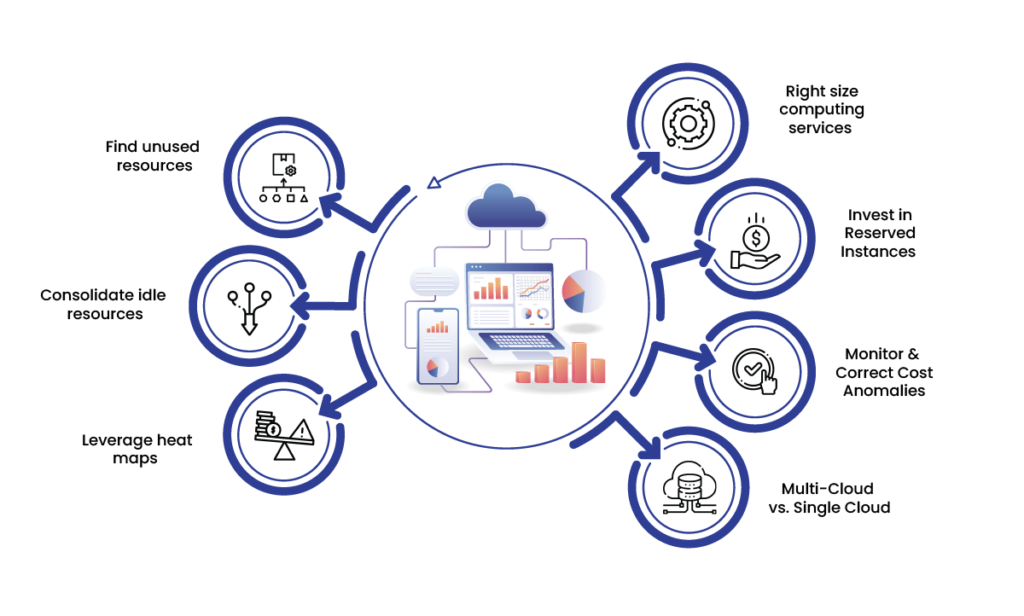- Home
- About
- Services
Data Engineering
and Analytics - Resources
- Partner with Us
Understanding Public, Private and Hybrid Cloud Differences
In the ever-evolving landscape of technology, businesses are increasingly relying on cloud computing to streamline operations and are focusing on enhancing flexibility, and boost scalability. However, the decision-making process doesn’t end at choosing cloud computing, one must navigate the intricate choices between public, private, and hybrid clouds. Each model comes with its own set of advantages and considerations but making the correct decision is a pivotal one for organizations. Let’s delve into the nuances of public, private, and hybrid clouds to unravel the key differences and help you make an informed choice for your business.
Public Cloud: The Shared Playground
Public clouds are like bustling digital marketplaces, where computing resources and services are provided by third-party vendors on a shared infrastructure. This model offers scalability, cost-effectiveness, and flexibility since users are able to access resources on-demand and pay only for what they use.
One of the primary benefits of the public cloud is its accessibility. Small to medium-sized enterprises, startups, and businesses with variable workloads find public clouds particularly appealing due to the pay-as-you-go pricing model. However, the shared nature of resources raises security concerns. Companies dealing with sensitive data or those subject to strict compliance requirements may need to consider more secure alternatives.
Private Cloud: The Exclusive Sanctuary
In contrast, private clouds provide a more exclusive and dedicated environment. Here, computing resources are isolated for the sole use of a single organization. This model offers enhanced control, customization, and security. Private clouds are often preferred by industries with stringent data security and compliance requirements, such as finance and healthcare. Setting up and maintaining a private cloud infrastructure demands a significant investment in
both time and resources. The organization is responsible for the entire infrastructure, from hardware to software, resulting in higher upfront costs compared to the pay-as-you-go model of public clouds.

Hybrid Cloud: The Versatile Compromise
Recognizing the strengths and limitations of both public and private clouds, the hybrid cloud model emerges as a strategic compromise. In a hybrid setup the organizations can seamlessly integrate on-premises infrastructure with public cloud services which creates a flexible and scalable environment.
Hybrid clouds offer the versatility to run critical workloads on the private cloud while utilizing the public cloud for less sensitive tasks. This flexibility allows businesses to optimize costs which addresses the specific security concerns, and will get adapted to fluctuating demands. For example, during periods of increased demand, a company can leverage the public cloud’s scalability, while keeping confidential data within the secure confines of a private cloud.
However, managing a hybrid environment introduces its own set of challenges. Integration complexities, data transfer considerations, and the need for a robust management strategy become critical factors. Organizations must ensure compatibility between different cloud providers and maintain a comprehensive understanding of their hybrid infrastructure.
Conclusion: Tailoring Your Cloud Strategy
Choosing between public, private, and hybrid clouds is not a one-size-fits-all decision. It requires a nuanced understanding of your organization’s goals, operational requirements, and budget constraints.
Public clouds offer accessibility and cost savings but may lack the security required for sensitive data. Private clouds provide exclusive control but demand significant investments. Hybrid clouds strike a balance which offers a versatility and scalability but requires a careful management.
In conclusion, the key to a successful cloud strategy lies in aligning your choice with your organization’s unique needs. Whether you opt for the shared playground of a public cloud, the exclusive retreat of a private cloud, or the versatile compromise of a hybrid cloud, understanding these differences empowers you to navigate the cloud maze effectively, ensuring that your chosen model aligns seamlessly with your business objectives.

